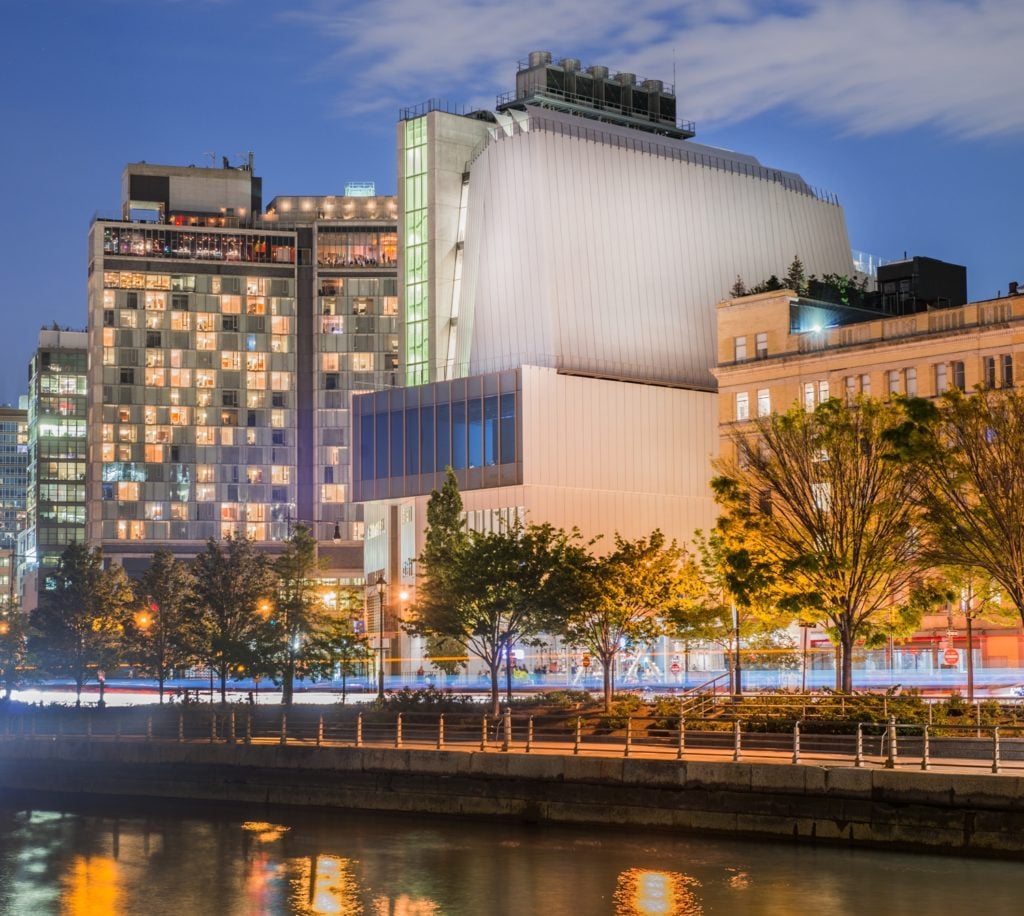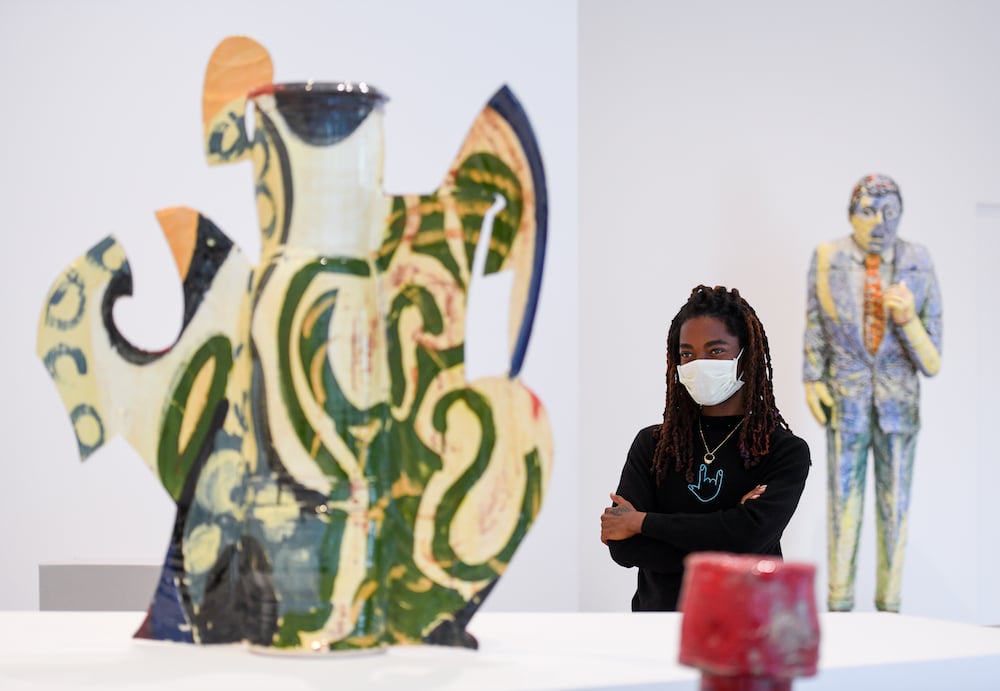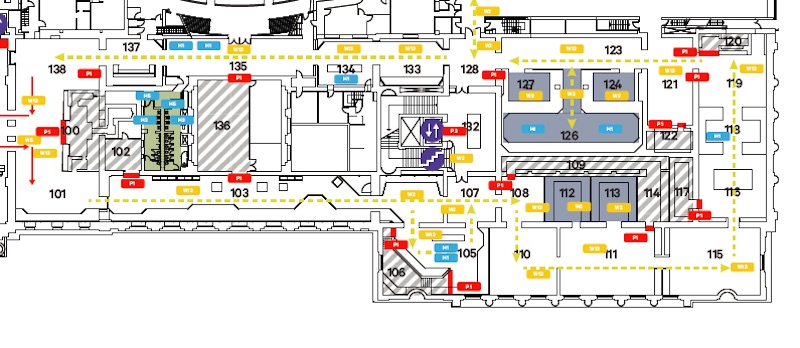Art World
It Takes a Village: Meet the New York City-Wide Task Force That Helped Art Institutions Reopen After Lockdown
Representatives from the Whitney and the Met, two founding members of the task force, tell us about its work and goals.

Representatives from the Whitney and the Met, two founding members of the task force, tell us about its work and goals.

Eileen Kinsella

When the Whitney Museum of American Art in New York reopened to members on August 27 after five months of closure, eager visitors with masks lined up on carefully marked social-distancing indicators outside the museum’s glass doors.
When one museum-goer in the lobby asked where visitors would get their temperatures taken, museum COO Amy Roth replied: “You already did.”
Thanks to a tripod-mounted thermal-imaging camera that scans visitors as they walk through the vestibule, those checks happen automatically.
And that’s just one of many new precautions that resulted from an unprecedented alliance of 25 New York cultural institutions across all five boroughs that formed make sense of how to reopen after the citywide museum shutdown in March.
“We knew there would be guidance from the government, but we didn’t know what that would be,” Roth tells Artnet News.
What museums did know was that they would have to figure out some things for themselves. The government, for instance, was unlikely to weigh in on whether handing out audio-visual headsets would be okay in an era of extreme hygienic caution.

Installation view of “Making Knowing: Craft in Art, 1950-2019” Whitney Museum of American Art. Photo by Sean Sime, courtesy the Whitney Museum
The museums “determined that we were better served working together” to answer those and many other questions, Roth says, noting that the institutions were inspired by the way hospitals had begun to collaborate since the onset of the pandemic.
Many of the discussions revolved around how to develop uniform safety measures across the institutions, so that “visitors wouldn’t see a major difference between a visit to the Whitney, and say, MoMA, or the Queens Museum.” Differences, she says, “lead to doubt, and feelings of discomfort if the standard of care is different.”
The first museum task force meeting, which took place in April, had about 15 institutions participating, and grew from there. Weekly meetings are still held each Wednesday.
“It turns out reopening a museum is much harder than closing one,” says Laurel Britton, senior vice president of revenue and operations at the Met, which has been part of the task force from the start.
The Met also has its own internal task force of 12 that has been meeting each day for the past four months. That group came together to solve a host of related issues: Staff reentry, visitor reentry, and physical circulation. One of its first steps, in June, was to poll staff on everything from returning to the workplace, to commuting, to continuing to work from home.
“We found that many staff needed to be reassured we were going to open the building in as safe a manner as possible,” Britton says, noting that workers were fairly evenly split between those who were comfortable with returning, those who were not, and those who felt neutral about the issue. (Upon the Met’s reopening, one visitor experience employee told Artnet News they were feeling “a little uneasy,” but pleased that “so far the museum seems to be making the right choices,” while another New York museum staffer said they felt museums should remain closed.)
The bottom line? “Communicating with staff and doing it early, was critical,” Britton says.
The Met also had to deal with the logistics of signage. With a space of its size—at roughly 58,800 square feet, it’s the largest museum in the US—workers needed to place about 800 social-distancing reminders throughout the building.

An example of a new map at the Met for the Egyptian galleries. Red sections indicate no entry, or signal capacity reminders at elevators; blue sections point to sections where there are health and safety reminders; and yellow indicates signage, such as “entrance only.” Image courtesy the Metropolitan Museum of Art.
But one big issue was keeping up with changing regulations. In July, New York Governor Andrew Cuomo announced that museums would have to remain closed even as New York City entered the fourth phase of its reopening on the 20th of that month.
“All the goalposts kept moving,” Britton says. Throughout that time, the Met kept in touch with local and state officials. “The goal for us was never to pressure people to allow us to reopen, but to show them that we’re doing everything we can to meet the requirements for when we are given the green light,” Britton says.
On the museums’ opening days, one thing became crystal clear: The Whitney and the Met, two world-renowned institutions, were going to become local museums, at least for the time being. On its first day, the Met reported roughly 8,400 ticketed visitors—a far cry from the usual summer high of 25,000 visitors a day. The Met’s post-COVID capacity is capped at 14,000.
And perhaps not surprisingly, given all the travel restrictions, 80 percent of the visitors on opening weekend were from New York City. Pre-lockdown, roughly 70 percent of daily visitors came from outside the city.
The Whitney, meanwhile, drew 2,700 visitors over the five days of its member preview, and more than 500 on the first day. The museum is currently capped at 25 percent capacity.
The next step? Keep working at it, says Roth. The Whitney is now in touch with peer institutions looking to reopen in the weeks and months ahead.